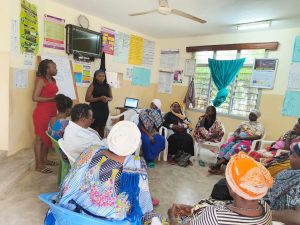Introduction and objectives of the project –
Adolescent pregnancy is a global issue; worldwide approximately 16 million girls between the ages of 15 and 19 and 2 million girls under age 15 become pregnant every year. A vast majority (approximately 90%) of these adolescents’ births – especially among 15-19 year olds – occur within marriage.
In Kenya, 18% of adolescent girls have begun childbearing (had a live birth or are pregnant with their first child), Narok County has the highest prevalence at 40% (KDHS 2014). Teenage pregnancy is not only a reproductive health issue, but is also a crosscutting problem that directly affects the current and future socio-economic well-being of young women.
This study sought to identify and document views of adolescents and their key influencers (such as parents, teachers, village elders, religious leaders and health care providers) on drivers of pregnancy, access to sexual and reproductive health (SRH) services including family planning.
Methods
A mixed method approach was used during data collection; qualitative data was collected using in-depth interviews with key influencers (who included the parents of childbearing adolescents, religious leaders, teachers, community leaders, health care providers and pregnant or already-parenting adolescents). A total of 20 IDIs were conducted with key influencers. Quantitative data was collected using structured questionnaires administered to 300 adolescents (both boys and girls) aged 15-19; Open Data Kit (ODK) was used in data collection.
Findings
- 1% of adolescents’ boys and girls who did not have children had already had sex.
- Age at first sex was 15 years;
- Males reported young sex partners ranging between 13-16 years compared to girls, 18-22 years.
- Majority, 43.3% reported that they had sex because they wanted to, 17.0% were given money and gifts, while 10.3% reported to have been tricked into having sex.
- Only 7.3% reported that condoms are used every time or most of the time
- Condoms were not used because: 38.5% trusted each other, 28.7% didn’t feel like, 22.1% of the partners refused, 11.5 didn’t trust condoms and others said condoms were expensive (3.3%) and not available, 6.6%.
- Only 26.8% said that young people should be allowed to use FP/C.
- Of the 73.2% who said that young people should not be allowed to use FP/C, stated the main reason being that they will cause infertility – 48.0% with 28.0% saying it will increase sexual activities, 13.3% believing its culturally inappropriate and 10.3% saying girls will grow fat.











